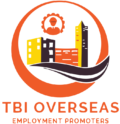
Introduction
In today’s interconnected world, businesses and industries are constantly seeking ways to expand their horizons and tap into global talent pools. Overseas manpower recruitment has emerged as a crucial solution to meet the growing demands of skilled labor, filling gaps in specialized expertise, and fostering diversity in the workplace. In this blog, we will delve into the world of overseas manpower recruitment, exploring its significance, benefits, challenges, and best practices.
The Significance of Overseas Manpower Recruitment
Overseas manpower recruitment involves the process of sourcing and hiring skilled professionals and workers from other countries to meet the workforce needs of businesses and organizations. This chapter will highlight why overseas recruitment has become increasingly important in today’s global economy:
1.1 Global Talent Shortages: Many industries face shortages of skilled professionals, making it essential to look beyond borders to fulfill workforce requirements.
1.2 Diversity and Inclusion: Recruiting talent from diverse backgrounds can enhance creativity, innovation, and adaptability within an organization.
1.3 Access to Specialized Skills: Overseas recruitment enables companies to access specialized skills that may be scarce in their domestic labor markets.
2: Benefits of Overseas Manpower Recruitment
In this section, we will explore the numerous advantages of overseas manpower recruitment:
2.1 Expansion of Talent Pool: Overseas recruitment opens up a vast pool of talent with unique skills and experiences.

2.2 Cost-Effective Solutions: Hiring skilled professionals from countries with lower labor costs can be financially advantageous.
2.3 Cultural Exchange: The recruitment of foreign talent fosters cultural exchange and a global mindset within the organization.
3: Challenges in Overseas Manpower Recruitment
While overseas recruitment offers many benefits, it comes with its fair share of challenges. This chapter will discuss these challenges:
3.1 Legal and Regulatory Complexities: Navigating immigration laws and work permits can be a daunting task.
3.2 Cultural Differences: Bridging cultural gaps in the workplace can be challenging but is essential for harmonious collaboration.
3.3 Language Barriers: Effective communication is crucial, and language differences can pose obstacles.
r 4: Best Practices for Successful Overseas Manpower Recruitment

To ensure a smooth recruitment process and mitigate challenges, it is essential to follow best practices:
4.1 Partner with Reliable Agencies: Collaborate with reputable recruitment agencies with expertise in overseas placements.
4.2 Understand Local Labor Laws: Comply with the labor laws and regulations of the host country.
4.3 Cultural Sensitivity Training: Provide cultural sensitivity training to both incoming recruits and existing staff.
Chapter 5: Case Studies
In this section, we will explore real-world case studies of companies that have successfully implemented overseas manpower recruitment strategies. These examples will provide insights into best practices and the positive impacts of international talent acquisition.
Chapter 6: Conclusion
Overseas manpower recruitment has become a critical strategy for businesses aiming to thrive in a globalized world. While it presents challenges, the benefits far outweigh the difficulties when executed effectively. By understanding the significance of overseas recruitment, embracing diversity, and adhering to best practices, organizations can harness the potential of a global talent pool to drive success and innovation.
In future posts, we will delve deeper into specific aspects of overseas manpower recruitment, such as legal considerations, cultural integration.

SEO Optimizers Team https://ztd.bardou.online/adm